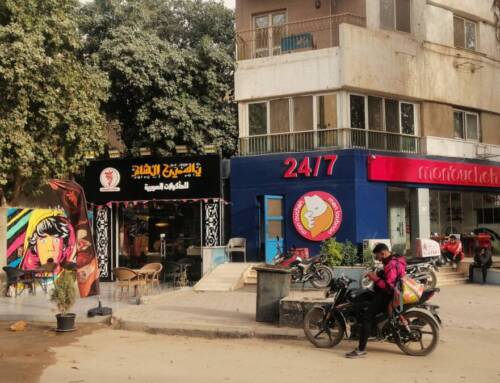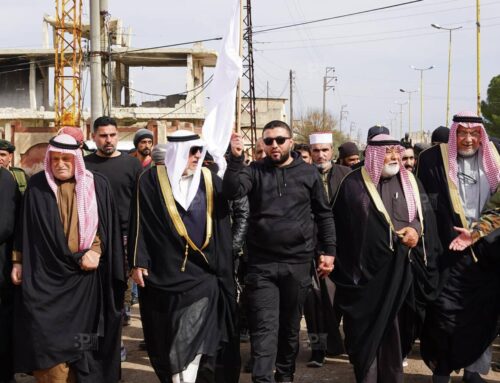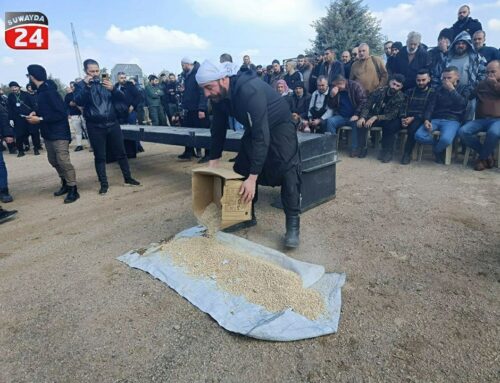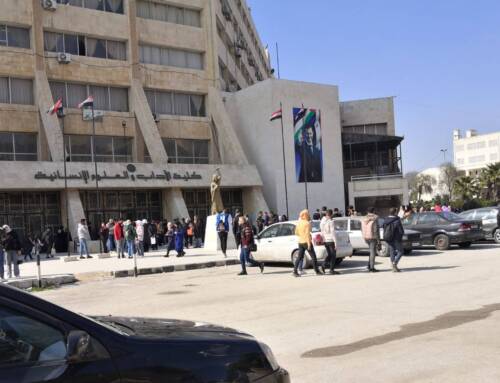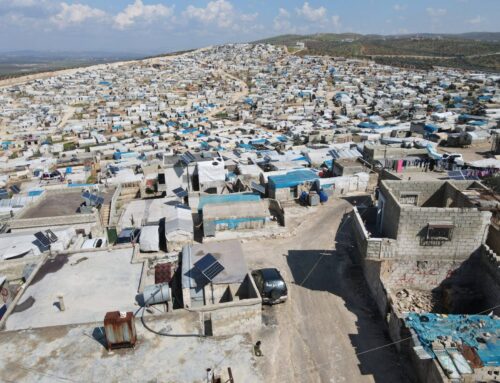When is a ceasefire not a ceasefire? ‘I am not a terrorist…I am hungry’
Syria Direct news analysis AMMAN: Once a mountain resort town […]
8 December 2015
Syria Direct news analysis
AMMAN: Once a mountain resort town for vacationing Damascenes, Madaya today is the latest microcosm of yet another unfulfilled truce with the Syrian regime and its allies as residents eat leaves and vegetation to stay alive despite a ceasefire agreement nearly three months ago.
Madaya is one of three rebel-controlled towns located in the Qalamoun mountains in West Ghouta, less than a dozen kilometers from the Syrian-Lebanese border. A resort town where wealthy Syrians escaping the intense heat of their valley capital maintained summer homes, Madaya was a Sunni-majority town home to roughly 10,000 people before the outbreak of the war.
Today, that number is estimated at 40,000, after Madaya absorbed thousands of civilians fleeing fighting from nearby Zabadani, once the epicenter of the rebels’ presence in Qalamoun.
This past July, regime forces and its allies blockaded Madaya; a by-product of the fierce fighting for nearby Zabadani, the gateway town into the Qalamoun mountains overlapping into Lebanon.
Regime forces and allied militias launched an assault on Zabadani just east of the Lebanese border this past July in an effort to retake it from rebels who have held it since 2012. Hezbollah, and Iran by extension, are deeply invested in maintaining access to the mountain range, home to hundreds of foot paths, some so narrow as to only have room for one donkey to walk through. These trails are used for smuggling in and out of Lebanon.
After Zabadani came under heavy assault from regime forces and their allies in July, Idlib countryside rebels chose to play their own card to pressure the regime to relent its bombardment of the Qalamoun town. Victory Army fighters launched a similar bombardment on al-Fuaa and Kafariya, two Shiite-majority towns in Idlib province that rebels encircled this past March.
After much back and forth, negotiations resulted in a late September agreement between the Victory Army rebels and an Iranian negotiation committee representing the regime: A six-month ceasefire, currently in place, stipulates the entrance of aid to regime-controlled Kafariya and al-Fuaa in exchange for the regime doing the same around rebel-held Zabadani (including Madaya) in West Ghouta.
All injured parties were to be evacuated from their respective areas and the UN and Red Crescent were granted access to deliver food and medical aid to all the besieged areas, according to a report by pro-regime Al-Ahdath News on September 27.
Yet both the regime and the Victory Army have failed to implement the majority of the ceasefire agreement stipulations in the towns apart from halting major military operations.
The humanitarian situation in al-Fuaa and Kafariya has not deteriorated to the extent it has in Madaya, with regime helicopters airdropping supplies, including food, to residents of the two Shiite towns in Idlib on November 28, reported a Victory Army-affiliated journalist via Twitter the same day.
In Madaya, along with other West Ghouta towns included in the ceasefire, regime promises remain largely unfulfilled, residents and activists tell Syria Direct. What makes the situation exceptionally dire in this small mountain town is the number of people crammed into it.

Five families are staying in one house in Madaya, a Zabadani resident staying in the town told the London-based pan-Arab news agency Arabi 21 this past September before the ceasefire went into effect. Food was so scarce “we might eat one day and not the next,” he said.
“When the truce came into effect, none of its terms was enforced except for the ceasefire, and there was only one [UN] delivery of humanitarian aid,” said Husam Madaya, a member of the Local Coordination Council in Madaya, the town’s local administrative body.
But nearly half of the high-energy biscuits included in that aid delivery to Zabadani and Madaya on October 18 were expired and gave hundreds of residents, mainly children, food poisoning.
Last Thursday, a delegation from the Red Crescent reportedly entered the town, but without aid. The Red Crescent team was there to prepare documents for the wounded so they can be evacuated in “the coming days,” reported a local news page the same day on Facebook.
Syria Direct reached out to the UNHCR and the Red Crescent for comment, but received no reply. Syrian state media does not appear to have reported on Madaya in recent months.
Starvation nation
The unfulfilled ceasefire is the latest example of the American administration either unwittingly or deliberately remaining disconnected from the reality on the ground in Syria.
What American political leaders hear as a “ceasefire” does not have the same meaning in Syria, where it is merely the beginning of a different conversation over how to squeeze civilians even harder before implementing the bare minimum of truce terms.
Most of the ceasefires grew from the Assad government’s stated policy of “kneel or starve” (a national campaign launched in November 2013 well-documented by Syria Direct; see here, here and here for examples).
“Hunger defeated us,” 64-year-old Abu Jalal al-Telawi told Syria Direct in February 2014, three days after evacuating Old Homs, one of the 13 rebel-controlled neighborhoods that had been completely encircled by regime forces since June 2012.
“They hit the place with missiles but we didn’t leave, they shelled us with mortars but we didn’t leave, they used tanks and snipers but we didn’t leave. But now there is no food left,” said al-Telawi at the time, a butcher before the war.
And that is why the Syrian regime continues to use the starvation of civilians to bring them to their knees: In enough cases, it works. When people go hungry, the will to resist weakens alongside their bodies. [See south Damascus citizen journalist Walid al-Agha to Syria Direct in January 2015: “Despite the regime’s numerous violations, the truce has lifted a huge burden from the people’s shoulders. People aren’t suffering from hunger anymore in southern Damascus after the truces.”]
Once a ceasefire is agreed upon, the international community then reads prospects for a larger-scale model across the country, as the American ambassador to the United Nations observed last week.
“There is significant enthusiasm to keep the momentum going, particularly with regard to thinking through whether local ceasefires might be possible on an expedited basis,” Ambassador to the United Nations Samantha Power told a press conference in New York on December 1 after the Syrian regime announced a truce in Waer, the last rebel-held district of Homs city.
But Walid al-Agha and countless other Syrians inside the country see the truces differently. As al-Agha pointed out in the January interview: “The reason behind the truces in the towns of Babila, Yelda and Beit Sahm was to end the regime blockade, especially after the deaths of 200 people as a result of poor nutrition, starvation, and lack of medicine during the blockade.”
In Madaya, a closer look at the aftermath of the ceasefire reveals that once citizens kneel, they still starve.
Two civilians died from starvation in Madaya last Friday, reported pro-opposition Eldorar the same day, bringing the total number of deaths to seven since the regime imposed its blockade in July.
More than 1,000 cases of fainting due to malnutrition have been documented in Madaya as of last week, said Jabir, the citizen journalist living in Madaya.
There is not enough food, half a dozen Madaya residents told Syria Direct.
“The residents here live on one meal a day at best, while many other families go days without food,” said Husam. “The only food available is rice and bulgur, and there is no flour or any vegetables.”
“Today, the town is still suffering from a severe lack of food, and the food that is available is outrageously expensive,” said Husam
One Madaya resident has volunteered to subsidize the price of meat to combat inflation, lowering the price from approximately $64 to $25 per kilo, Husam told Syria Direct on Monday.
The price for a kilo of rice fluctuates between SP16,000 (approximately $85) and SP22,000 (approximately $117). Other staples such as bulgur and lentils, when actually available, sell for SP18,ooo (approximately $95) and SP20,000 (approximately $106) per kilo, sources in Madaya told Syria Direct. The price of a single piece of flatbread has reached SP850 (approximately $4.50).

The ongoing blockade is not the only reason behind price hikes.
“Merchants hoard [food] and play a role in the inflation,” Ain Jabir, a citizen journalist in Madaya, told Syria Direct, adding “there aren’t rebel factions to take charge and monitor the prices and keep the monopolists accountable.” The town is primarily run by the civilian council, not a particular rebel faction.
To get by, Madayans eat cooked leaves from berry bushes and unripe mangoes from nearby orchards and farms that have not been burned down by the regime, said Husam. Farms and orchards constitute the Zabadani plain, located in the valley west of Madaya.
When the blockade began in July, regime and Hezbollah forces implemented a scorched-earth policy, said Husam. “They began burning the orchards in the plains around Madaya and Zabadani…to encircle the area more and more.”
“Even though the taste is terrible and it contains harmful substances, there is no alternative,” Jabir said.
“Some people have resorted to cooking foliage and vegetation to alleviate their hunger,” he added. Others try to smuggle food in from surrounding orchards past the blockade, but a number of them “have been killed by regime bullets.”
The regime breaks the ceasefire “daily,” said Jabir, claiming regime forces shoot at people along the border area between regime and rebel-held territory.
One regime sniper killed a civilian who was out gathering firewood near the border area on October 15, reported Radio al-Kul on November 15.
Regime forces also planted landmines along the border of Madaya to “prevent people from sneaking out and smuggling in food,” said council member Husam.
Four civilians were killed and two others were injured by these landmines while trying to flee from the encircled city on Monday, according to a post on Madaya’s Facebook page the same day. Seven people have been killed and six injured thus far by regime landmines in and around Madaya.
‘Lift the siege’
With the blockade this past July also came a wave of forced displacements by the regime, relocating residents of the plains to Madaya, said Husam, a claim corroborated by other pro-opposition sources.
The regime has reportedly relocated 260 families from the Kurum Madaya region in the Zabadani plains to Madaya, reported pro-opposition Radio al-Kul on November 15, further exacerbating the food and medical crisis. In addition to the displaced residents of the countryside, Madaya has also absorbed residents from Zabadani.
“The living conditions in Madaya are absolutely the worst,” Abu Abid al-Qalamouni, a displaced civilian from Zabadani currently living in Madaya, told Syria Direct.
The local Madaya council has tried to directly negotiate with the regime forces on behalf of the town’s residents to no avail.
“The council is currently trying to negotiate to lift the siege on Madaya, but the problem is that there is more than one side to negotiate with,” said council member Husam Monday. “You have the regime, Russia, Iran, and Hezbollah and each party trying to negotiate for their own interests.”
Hungry, desperate, and so far unable to negotiate an end to the blockade, the Madaya local council and residents have turned to demonstrations, calling on the regime to lift the blockade. Last week, residents of Madaya and the nearby town of Buqayn protested almost daily.
Dozens of children and other residents of the towns of Madaya and Buqayn demonstrated and called for the five-month regime siege to end last Wednesday, Madaya council member Husam told Syria Direct last Thursday.

“Before the demonstrations began, we spelled out ‘I am hungry’ with the student’s bodies as a way of expressing the starvation of children in the area,” said Husam.

The Baath Party daily, Al-Baath, described last week’s string of demonstrations in Madaya and Buqayn as “spontaneous popular protests against terrorists, war profiteers, and monopolists,” using their own monopoly on the state’s narrative to claim that protestors “called for the Syrian Arab Army to enter the two towns to purge them of terrorism, return them to normality, and safeguard food and services that the terrorists took away,” reported Al-Baath on December 3.



